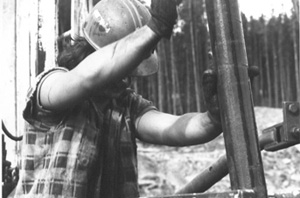- Home
- News
- Features
- Topics
- Labor
- Management
- Opinions/Blogs
- Tools & Resources
Wanted Local Workforce For The Global Oil And Gas Industry
ILO News— Wanted: A local workforce for a global industry.
Global demand for crude oil and natural gas is growing, leading to a surge in investment and increasing worldwide demand for skilled workers.
Global energy demand will increase by 35% from 2010 to 2035, according to the International Energy Agency (IEA).
New sources of oil and gas mean future demand will most likely be met, but the industry may not find the workers it needs to exploit new reservoirs.
According to International Labour Organization oil and gas expert Yasuhiko Kamakura, more than half of all oilfield professionals will reach retirement age in the next decade. This poses a real challenge for the industry.
“While oil and gas companies are expanding operations into new and ever more remote geographic locations, they will have to build local skilled workforces so that they can rely less on expatriate services,” Kamakura said.
“To this end, governments, employers and workers need to collaborate at a global level to determine the way forward to solve a shortage of skills in the industry.”
Making The Local Workforce A Benefit
Hiring more local workers could be a solution to the skills shortage – along with attracting more women to the sector (see box below).
The issue is on the agenda of an ILO meeting on skills, human resources and safety training in the oil and gas industry chaired by Ruek Puok Riek, who heads the Permanent Mission of the Republic of South Sudan to the United Nations Office and other international organizations in Geneva.
Riek points out that his country’s oil producing sector relies on expatriates.
“Most of our workers come from China, Malaysia and Indonesia… In South Sudan we do not have the people who can take over.”
Decreasing reliance on expatriates is difficult in some situations. It is nearly impossible in cases where local skilled workers are simply not available.
“It takes six years for a student to get a degree that is relevant to the oil and gas industry.
However, training for qualified workers and technicians can happen much faster and be a first step in building a qualified local workforce,” Riek says.
The example of Nigeria shows how difficult it is to develop a professional workforce with the type of skills that the oil and gas industry requires.
“The subjects taught in the science and technology faculties at Nigerian universities do not yet meet the skills demanded by major international oil and gas companies,” says Kamakura.
“However, the country is considering a new strategy that will ensure that Nigerian professionals will continue to play a critical role in this industry,” the ILO expert adds.
Training A Local Workforce

Inadequate local workforce: Canada needs workers for industries such as oil extraction and it’s recruiting workers in Ireland.
As companies seek to cut the cost of maintaining an international workforce, they are increasingly recognizing the importance of recruiting local talent. A local workforce with local knowledge and experience could eventually move into leadership positions.
In Angola, training centers – set up with the support of some oil companies – train Angolans to work in the oil and gas industry.
Courses on offer include risk analysis, geological systems and structures, industrial drawing and an introduction to drilling, valves and tubing.
Since the discovery of major oil reserves in 2007, Ghana has also adopted an ambitious strategy that aims to achieve at least 90% local content and local participation in all oil and gas activities by 2020.
Kamakura stresses that improving working conditions and career programs are key to attracting talented workers.
|
Building A Local Workforce By Attracting Talented Women • The number of qualified women in the oil and gas industry is comparatively low. The women-to-men ratio has been stagnant over the past six years. |
|
Source: ILO |
http://www.ilo.org/global/about-the-ilo/newsroom/features/WCMS_195532/lang–en/index.htm
Please subscribe to WOW’s posts by email:
[subscribe2]
List your business in the premium web directory for free This website is listed under Human Resources Directory





